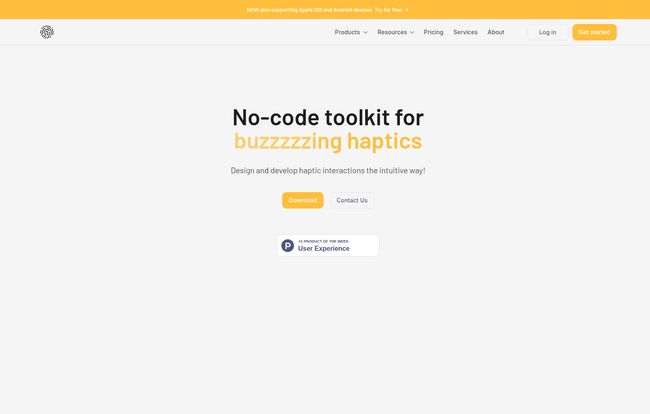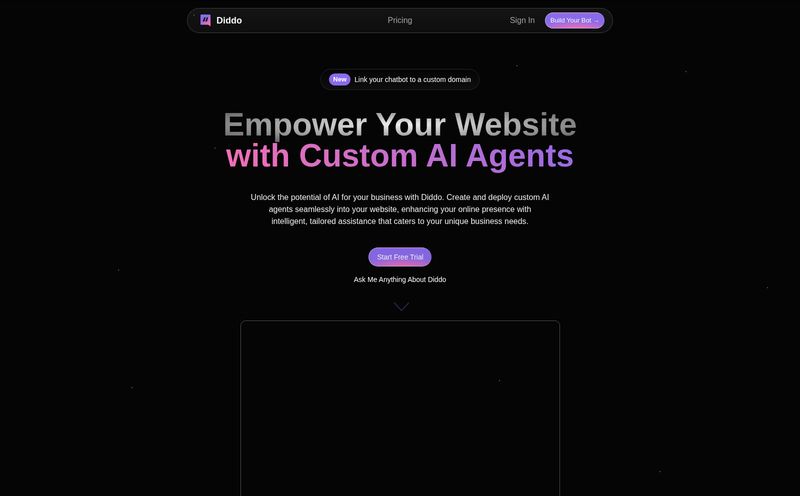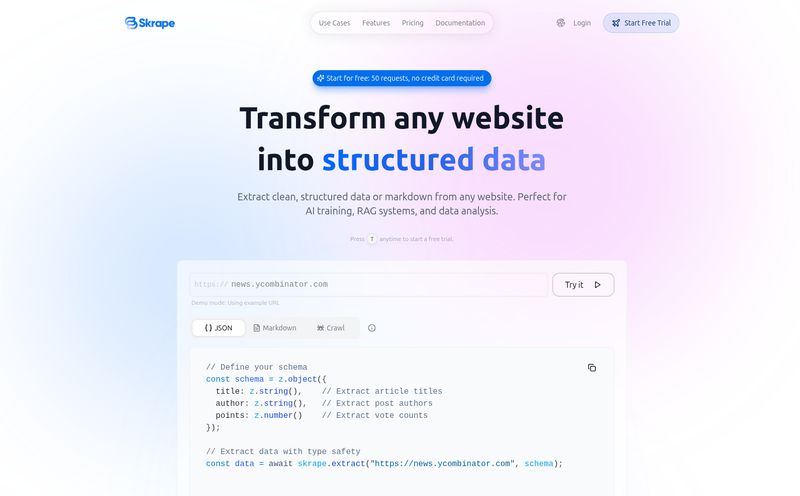You know what I mean. It's not just how it looks, but how it responds. The subtle click when you toggle a switch, the satisfying thump when you pull-to-refresh. That's haptic feedback, and for years, it's been the unsung hero of great user experience. Or, more often, a completely missed opportunity.
I’ve been in the SEO and traffic game for years, and I’ve seen countless beautifully designed sites and apps fail because their user experience just felt... dead. Lifeless. We obsess over pixels and load times, but we often forget that our phones are physical objects in our hands. Making them feel responsive is a huge part of the puzzle.
For the longest time, implementing genuinely good haptics was a pain. It meant diving into native code, wrestling with different APIs for iOS and Android, and a ton of trial-and-error. Honestly, it was a developer-heavy task that most design teams just didn't have the resources for. But what if it didn't have to be that way? What if designing a vibration was as easy as choosing a font? That’s the promise of a tool I’ve been playing with recently: Hapticlabs.
So, What is Hapticlabs Anyway?
Think of Hapticlabs as Canva for touch. It’s a no-code platform built specifically for designing, testing, and deploying haptic interactions. The whole idea is to take haptic design out of the hands of just coders and put it directly into the workflow of UX/UI designers, product managers, and researchers. The people who are actually shaping the user's experience.
Instead of writing lines of code to define a vibration's intensity and sharpness, you use a visual interface. You can craft everything from a gentle nudge to a sharp, precise alert, and you can do it for both Apple iOS and Android devices from one place. It’s a complete ecosystem, designed to take you from a rough idea to a fully implemented effect that your users can feel in their hands.

Visit Hapticlabs
Breaking Down the Hapticlabs Ecosystem
Hapticlabs isn't just one single thing; it's a collection of tools that work together. It's a pretty smart setup, actually.
Hapticlabs Studio: Your Design Playground
This is where the magic happens. The Studio is the web-based, no-code editor. It’s where you’ll spend most of your time, creating and tweaking your haptic effects. It even has an AI-Assistant that can give you suggestions, which is a neat touch for when you're not quite sure what a 'successful payment' should feel like. It stops you from just defaulting to the same generic buzz for everything, pushing for more creativity.
The DevKit and Mobile App for Real-World Testing
Here’s the thing about haptics: you can’t know if it’s right until you feel it. Staring at a waveform on a screen doesn't cut it. Hapticlabs solves this with their DevKit and a companion mobile app. You design an effect in the Studio, and you can immediately test it on a real device. This rapid prototyping loop is, in my opinion, its biggest selling point. No more waiting for a new app build just to see if a vibration is too strong or too weak. You can iterate in minutes, not days.
Who is This Tool For, Really?
I see this being a game-changer for a few groups. UX/UI designers are the obvious one. It gives them a new layer of communication to play with. Product managers who want to add a premium, polished feel to their app without derailing their development roadmap will love this. Indie developers, too, who want to compete with the big guys on 'feel' but don't have a dedicated engineering team for haptics.
Who isn't it for? If you're a massive company like Meta or Google with an entire team of haptics engineers, you might have your own internal tools that are more powerful. And if you're on an absolute shoestring budget, the pricing for the more advanced features might be a consideration, which we'll get to in a moment.
The Good, The Bad, and The Buzzzzy
No tool is perfect, right? After spending some time with it, here's my honest breakdown.
On the plus side, the no-code aspect is a massive win. It genuinely democratizes haptic design. The ability to prototype and test so quickly across both iOS and Android is fantastic and saves so much time. Having a complete ecosystem from the initial design to final deployment is a coherent, well-thought-out approach. I also think the AI assistant, while not a replacement for a good designer, is a clever feature for sparking ideas.
However, there are a couple of potential hiccups. The reliance on the Hapticlabs DevKit for some of the prototyping functionalities means you're tied into their hardware ecosystem. It makes sense for what they're doing, but it is an extra step. And let's be honest, the pricing can be a barrier. While there's a free tier, the more powerful features for professional teams come at a cost, and for some smaller studios or freelancers, it might be a tough sell. Their often the ones who could benefit most from this kind of tool.
Let's Talk Money: The Hapticlabs Pricing Structure
Okay, let's get down to brass tacks. How much does this all cost? Hapticlabs has a tiered structure that's pretty common for SaaS products. I've pulled this from their pricing page (as of late 2023).
| Plan | Price | Best For |
|---|---|---|
| Free | €0 | Individuals and students wanting to learn and experiment with basic haptics. |
| Starter | €450 / seat / year | Small teams and freelancers who need more advanced effects and commercial use. |
| Pro | €960 / seat / year | Professional design teams building complex product concepts with features like stand-alone prototypes. |
| Custom / Enterprise | Contact for pricing | Large organizations needing custom integrations, advanced support, and deployment features. |
My take? The Free tier is genuinely useful. You can learn the ropes and see if it fits your workflow. The Starter plan seems like the sweet spot for most small-to-medium-sized businesses. The jump to Pro is significant, but for teams where UX is a major differentiator, the cost is likely justifiable. The 'Contact Us' for the Enterprise tier and the Hardware DevKit is standard practice, but it's a personal pet peeve of mine. Just give me a ballpark!
My Final Take: Is Hapticlabs a Must-Have?
So, do you need to drop everything and sign up for Hapticlabs? Well, it depends. If you're a designer or PM who has felt frustrated by the generic, boring vibrations in your apps, then yes, you should absolutely check it out. The free tier alone is worth your time.
Hapticlabs is solving a real problem. It’s making a sophisticated design discipline accessible. For so long, great haptics were the exclusive domain of companies like Apple with its Taptic Engine. Tools like this level the playing field. They allow smaller players to add that same layer of polish and delight to their user experience.
It's not just about making things vibrate; it's about adding another dimension to communication. It's the digital equivalent of a firm handshake or a gentle tap on the shoulder. It's about making technology feel more human, and I'm all for that.
Frequently Asked Questions
- Do I need to know how to code to use Hapticlabs?
- Absolutely not. That's the whole point! It's a no-code platform designed for visual design and iteration, primarily for UX/UI designers and product teams.
- What devices can I design haptics for?
- Hapticlabs supports both major mobile operating systems: Apple iOS and Android. This cross-platform capability is one of its biggest strengths.
- Is there a free version of Hapticlabs?
- Yes, there is a free tier. It's great for learning the platform and experimenting with basic haptic design before committing to a paid plan.
- What is the Hapticlabs DevKit for?
- The DevKit is a piece of hardware that helps you prototype and test your haptic designs. It allows you to feel the interactions in a tangible way without needing to constantly build and deploy a full app.
- Can I use Hapticlabs for gaming applications?
- Definitely. Gaming is a prime use case for advanced haptics. Creating custom feedback for actions, impacts, and environmental effects could significantly improve immersion, and a tool like Hapticlabs would be perfect for that.
- How does the AI-Assistant actually work?
- The AI-Assistant acts as a creative partner. Based on the context of an interaction (e.g., 'error message', 'success notification'), it suggests appropriate haptic patterns, helping you move beyond generic buzzes and explore more expressive feedback.
Conclusion
In a world crowded with apps that all look increasingly similar, user experience is one of the last true frontiers for differentiation. Haptics are a massive, often untapped, part of that experience. Hapticlabs isn't just offering a tool; it's offering a chance to design for a sense that has been ignored for too long. By making it easy and code-free, they've removed the biggest barrier to entry. If you care about how your product feels, you owe it to yourself to give it a spin.



